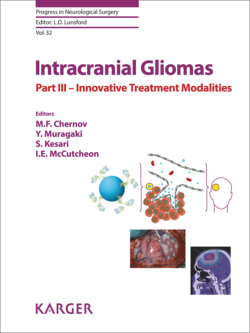Читать книгу Intracranial Gliomas Part III - Innovative Treatment Modalities - Группа авторов - Страница 64
На сайте Литреса книга снята с продажи.
Thermal Effects
ОглавлениеIt has long been known that focused ultrasound could be used to create local temperature increases leading to discrete regions of permanent tissue injury [6]. The attenuation of ultrasound as it propagates through tissue results in the conversion of mechanical energy into thermal energy. If this deposition of energy is concentrated in a given location and sustained for a suitable duration, an elevation of tissue temperature can be achieved sufficient to yield a biological effect. Thermal tissue injury has been extensively studied and cytotoxicity tends to be observed above a threshold temperature of 41–42°C; beyond this, the fraction of surviving cells decreases exponentially with increasing exposure time and temperature. Thermal dose is often expressed as the equivalent time at 43°C to produce the same biological response. It has been shown experimentally that the relationship between the temperature at which tissue necrosis occurs and the logarithm of the duration of exposure is linear, so that a decrease in tissue temperature of 1°C requires twice the exposure time to achieve the same effect. While this relationship holds true for all biological tissues, the threshold and sensitivity to thermal injury varies with their type, pH, hypoxia, and nutrient availability [7, 8].
The actual temperature reached for a given ultrasound field depends on the attenuation coefficient of the tissue, the regional blood flow (convective heat losses) and the thermal conductivity. All these parameters are not easily determined in vivo. For this reason, it is not possible to calculate exactly the temperature elevation that will be produced by a given ultrasound field in the living tissue; this is the impetus for real-time thermometry in modern therapeutic ultrasound systems. With detailed mapping, the temperature within a target volume can be confirmed to have reached that required for death in virtually all cells. However, direct cell killing is not always the goal of heating with ultrasound. For example, non-lethal hyperthermia of tumors may be used to increase perfusion and thus drug delivery, as well as to increase the sensitivity to subsequent irradiation and chemotherapy [8]. It can also been used to focally release the drug from heat-sensitive liposomal formulations [9], as well as to activate the agent for gene therapies [10]. Thus, careful tissue temperature monitoring can guide a number of thermal therapies.
